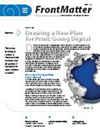尼泊尔喜马拉雅地区泉水干涸:地方政府领导人对原因、后果和保护工作的看法
IF 1.8
4区 环境科学与生态学
Q4 ENVIRONMENTAL SCIENCES
引用次数: 0
摘要
在喜马拉雅山脉,泉水对维持生命起着至关重要的作用。然而,由于自然和人为因素,这些重要的水源正在干涸。2020 年 7 月和 8 月,我们对尼泊尔 300 个地方政府单位的领导人进行了电话访谈,以了解泉水干涸的现状、主要原因、对当地社区造成的后果、采取的措施、保护措施和政策。74% 的地方政府单位的泉水已经干涸,44% 的地方政府单位存在中度到严重问题。7% 的地方政府报告称,由于泉水干涸导致饮用水匮乏是最严重的问题,这导致人们为寻找水源而向外迁移。道路和基础设施建设是导致泉水干涸的主要原因,其次是地震和气候变化。泉水干涸问题在丘雷地区较为普遍,其次是半山区和山区。地方政府采取了各种策略来缓解这一问题,如收集雨水、植树造林、抬升和钻孔等。泉水保护工作已被纳入地方政府的年度计划、项目和预算,但大多数计划、项目和预算的重点都是饮用水。因此,必须在所有利益相关者的参与下,采用自下而上的方法尽快解决这一问题。本文章由计算机程序翻译,如有差异,请以英文原文为准。
Drying of Springs in the Himalayan Region of Nepal: Perspectives of Local Government Leaders on Causes, Consequences, and Conservation Efforts
Spring water plays a crucial role in sustaining life in the Himalayas. Yet these vital water sources are drying as a result of natural and anthropogenic factors. In July and August 2020, we conducted phone interviews with leaders from 300 local government units across Nepal to identify the status of spring drying, the main causes, the consequences for local communities, measures adopted, conservation practices, and policies. Springs had dried up in 74% of local government units, with medium to severe problems across 44%. The scarcity of drinking water because of drying springs is the most severe issue, leading to outmigration in the search for water, as reported by 7% of the local governments. Road and infrastructure construction is the main cause of springs drying up, followed by earthquakes and climate change. Problems of spring drying are more prevalent in the Chure region, followed by the mid-hills and mountains. Local governments have used various strategies to mitigate the problem, such as rainwater harvesting, reforestation, lifting, and boring. Spring conservation work has been included in local governments' annual plans, programs, and budgets, but most of them focus on drinking water. Therefore, the problem must be addressed as quickly as possible with the participation of all stakeholders and following a bottom-up approach.
求助全文
通过发布文献求助,成功后即可免费获取论文全文。
去求助
来源期刊
CiteScore
3.10
自引率
18.80%
发文量
36
审稿时长
4.5 months
期刊介绍:
MRD features three peer-reviewed sections: MountainDevelopment, which contains “Transformation Knowledge,” MountainResearch, which contains “Systems Knowledge,” and MountainAgenda, which contains “Target Knowledge.” In addition, the MountainPlatform section offers International Mountain Society members an opportunity to convey information about their mountain initiatives and priorities; and the MountainMedia section presents reviews of recent publications on mountains and mountain development.
Key research and development fields:
-Society and culture-
Policy, politics, and institutions-
Economy-
Bio- and geophysical environment-
Ecosystems and cycles-
Environmental risks-
Resource and land use-
Energy, infrastructure, and services-
Methods and theories-
Regions

 求助内容:
求助内容: 应助结果提醒方式:
应助结果提醒方式:


